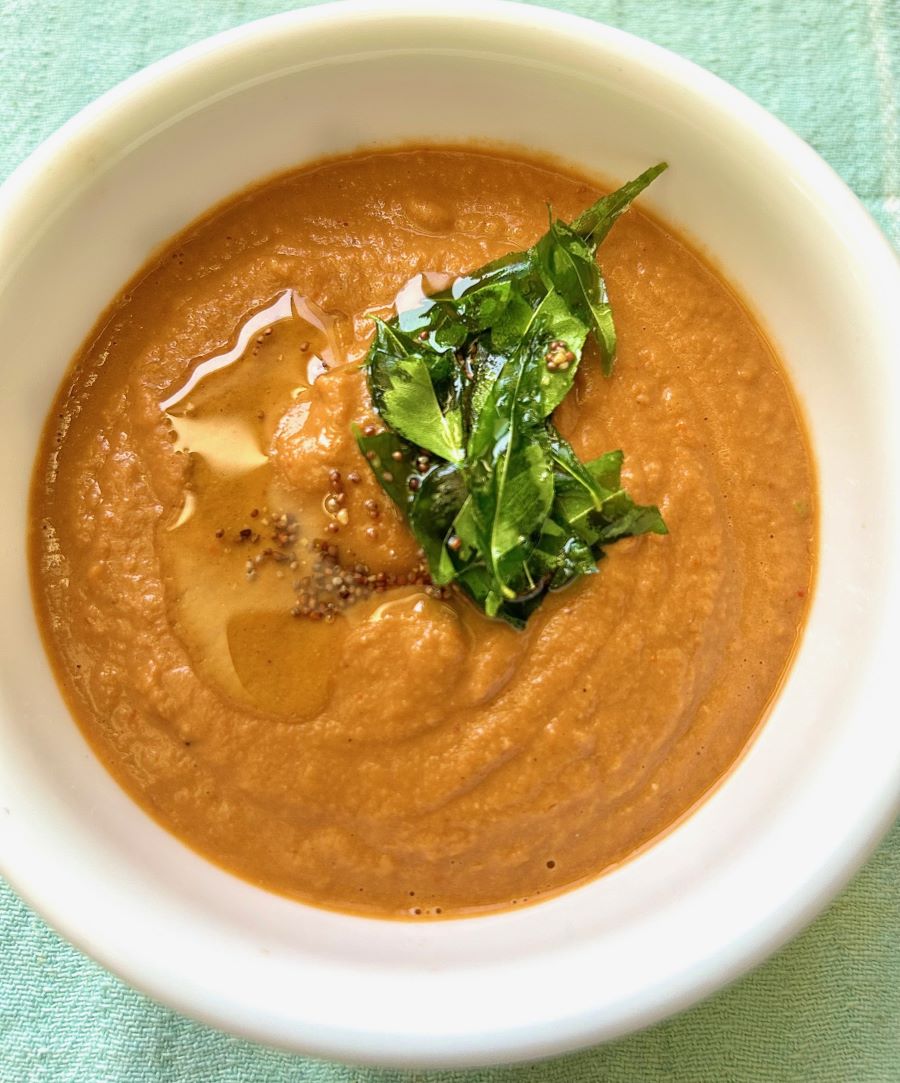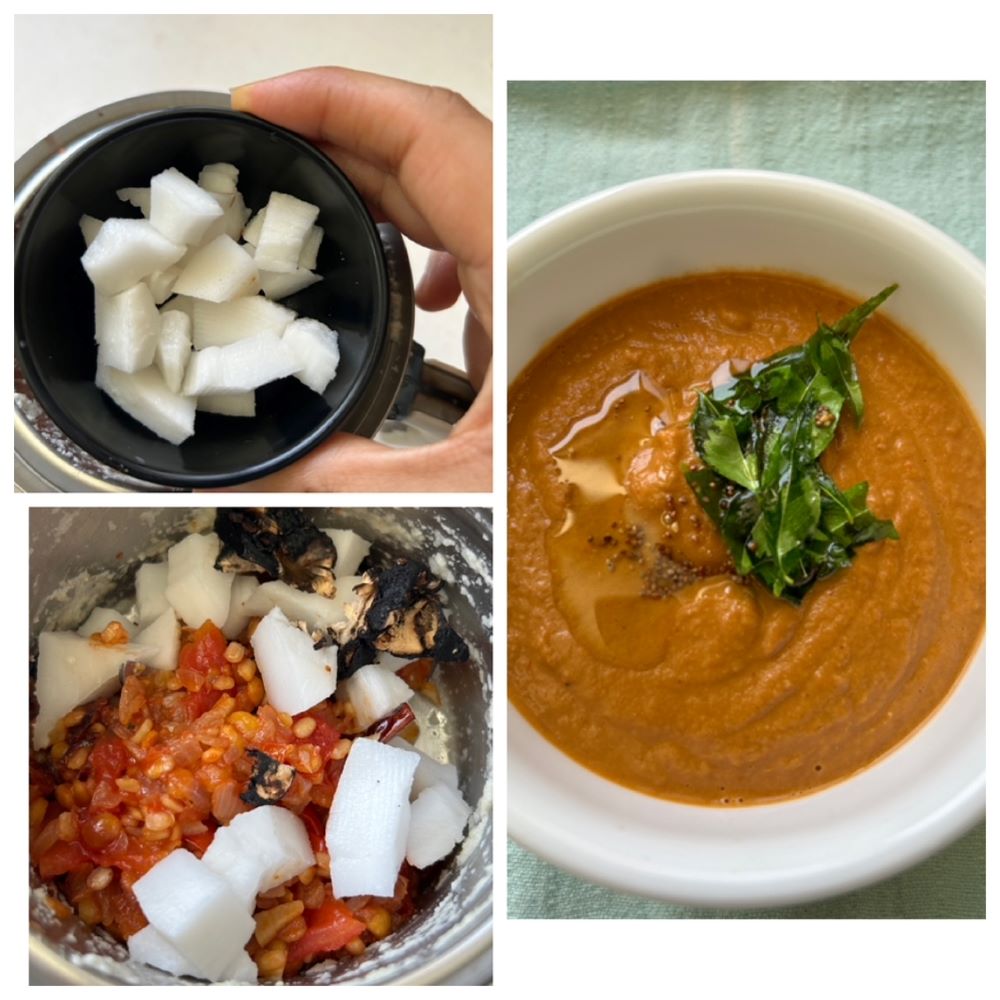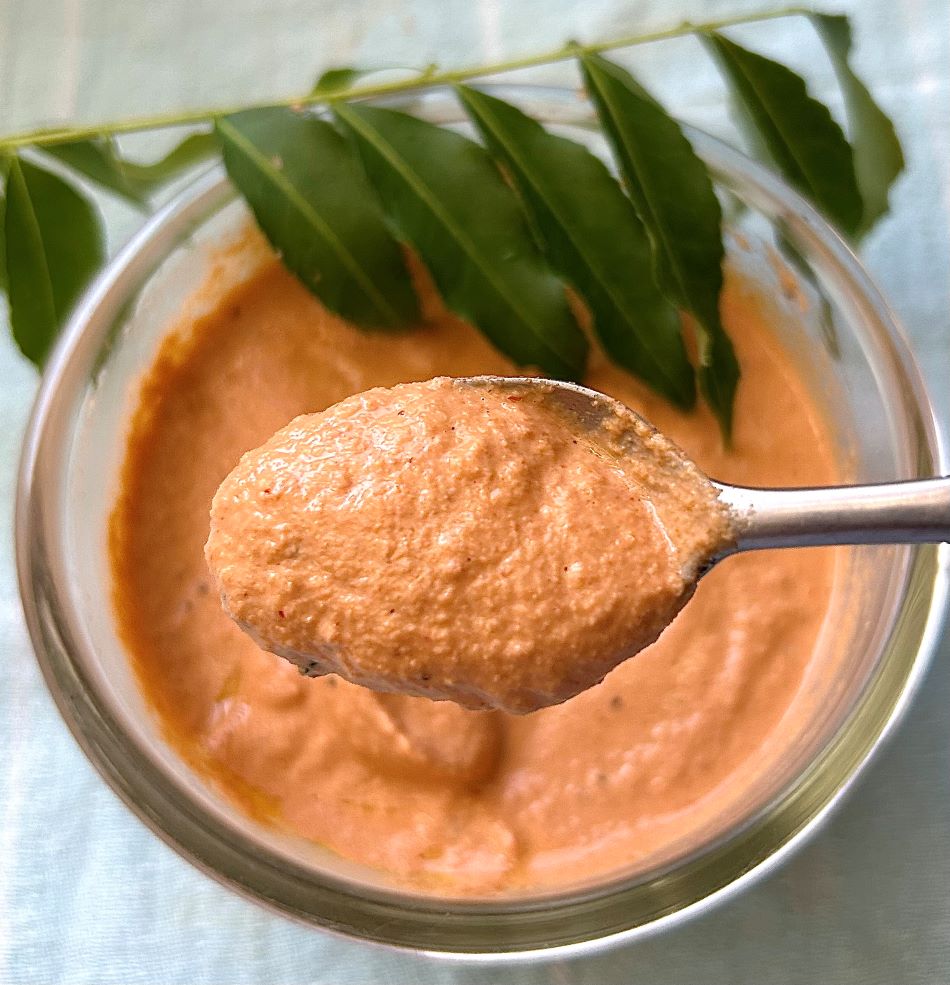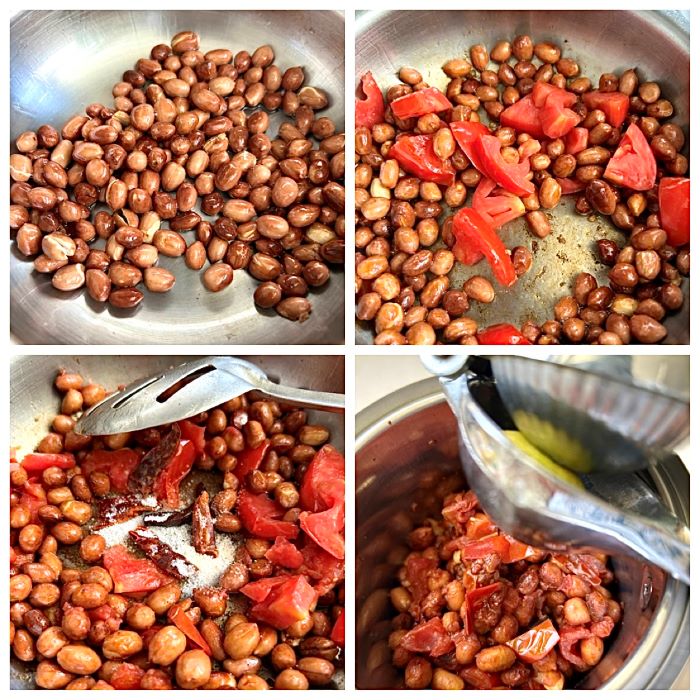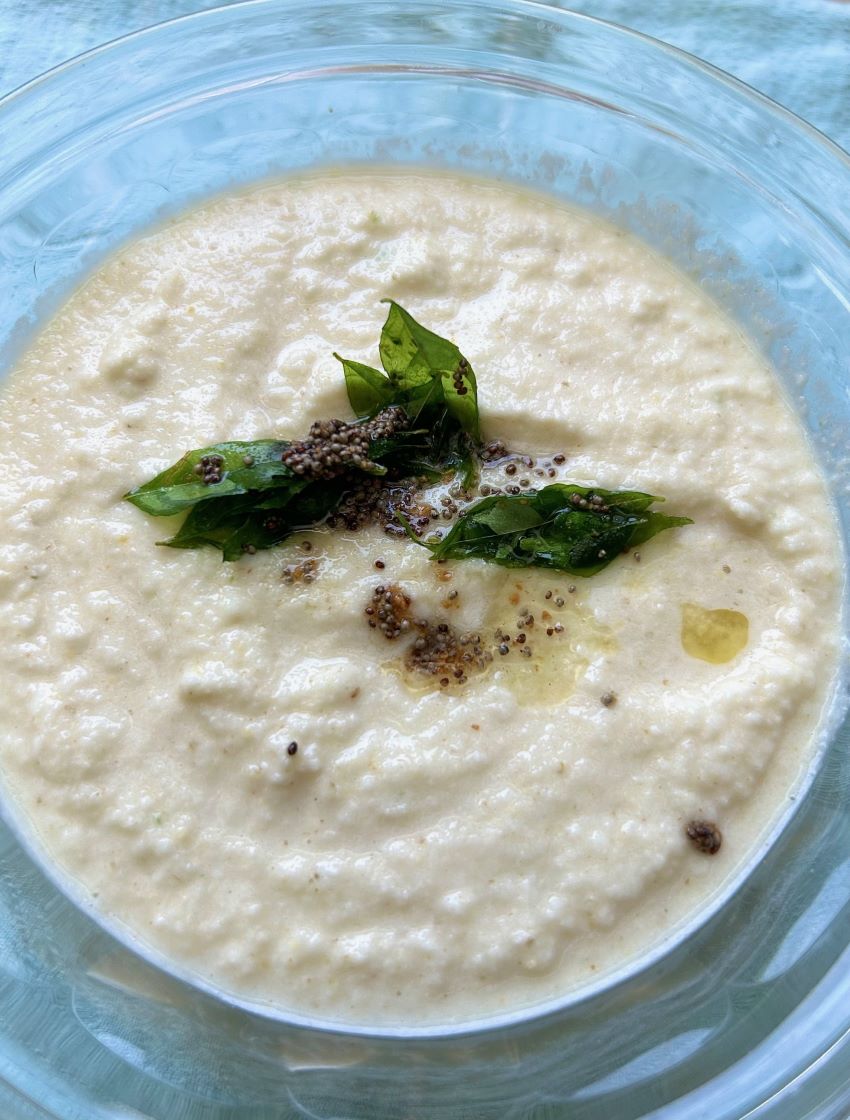
Coconut chutney is one of the most popular chutneys in South Indian cuisine. It is made round the year and is a common side dish in South Indian households. It is lightly spiced, nutty with natural and refreshing sweetness of coconut. It is made with fresh coconut, green chilli and lentil as prime ingredients. It is then tempered with mustard seeds, asafoetida and curry leaves.
Though there are several recipes of coconut chutney with their own variations and style but out of all I find this to be the best. Honestly, I don’t feel the need of sambar with dosa or idli when I’ve this chutney as side. It’s pretty good. Also, it is great for kids since it is not spicy and has mild sweetness of coconut. My little one calls this Snowman Chutney. He loves this chutney with idlis, dosa and paniyarams.
You can also check out my other South Indian chutney recipes- Kara Chutney and Tangy Spicy Peanut Chutney.

Apart from taste, having coconut chutney along with your meals has several health benefits too.
- Since coconut is rich in fibre, it can help in easy bowel movement. Eating it during summers and monsoon season can also prevents digestion-related problems such as indigestion and diarrhea.
- Coconuts are especially high in manganese which is essential for bone health and the metabolism of carbohydrates, proteins, and cholesterol.
- They’re also rich in copper and iron, which help form red blood cells, as well as selenium, an important antioxidant that protects your cells.
- Coconuts are low in carbs and high in fibre and good fats, which may be beneficial for blood sugar control.
Let’s see how we can make this delicious and healthy Coconut Chutney
Recipe
Ingredients:
- 1 cup Fresh Chopped Coconut with brown skin peeled
- 1 inch Ginger roughly chopped
- 1 tbsp Lemon Juice
- 1 small Green Chilli
- 1 tsp Cumin Seeds
- 2 tbsps Roasted Channa Dal/Bengal Gram
- 2 tsps Oil (I like to use either Groundnut or Coconut oil)
- Rock salt or Salt to taste
- Water: 1/2 cup or as required
For Tempering:
- 1/2 tsp Mustard seeds
- 1 sprig Curry leaves
- A pinch of Hing/Asafoetida
Method:
- Wash and pat dry channa dal. Add 1 tsp oil in a pan and roast the dal till golden brown.
- Add, coconut, roasted channa dal, lemon juice, ginger, chilli, 1/4th cup water and salt in a blender.

- Give a blitz. Now open and scrape off the sides. Add remaining water and blend again to get a smooth paste. You can more water if required but make sure to add little at a time.
- For tempering: To hot oil, add mustard seeds, curry leaves and hing. Cook till everything splutters. Pour the tempering over the chutney. Mix well.
- Your Chutney is ready to be served.
Notes:
- If you want whiter chutney, make sure to scrape the brown skin of coconut.
- You can easily make this chutney watery because in the beginning it will feel that you will need more water for blending but add little water at a time while blending.
- Use fresh coconut, that’s shell is pale in color than the dark brown colour or dried coconut. Fresh coconut’s chutney tastes the best while the other might taste a little oily.
- Do temper the chutney. It not only enhances the taste but also increases its shelf life.
- You can store the chutney in refrigerator for 3-4 days. It might thicken a little after refrigeration. You can add few tbsps of warm water to loosen it.
Do try this recipe and let me know in the comments section how you liked it. Would love to hear it from you guys. 🙂 Happy eating!

